The Definitive Guide to America's Best Mountain Bike Trails: Where Elite Riders Go to Push Limits
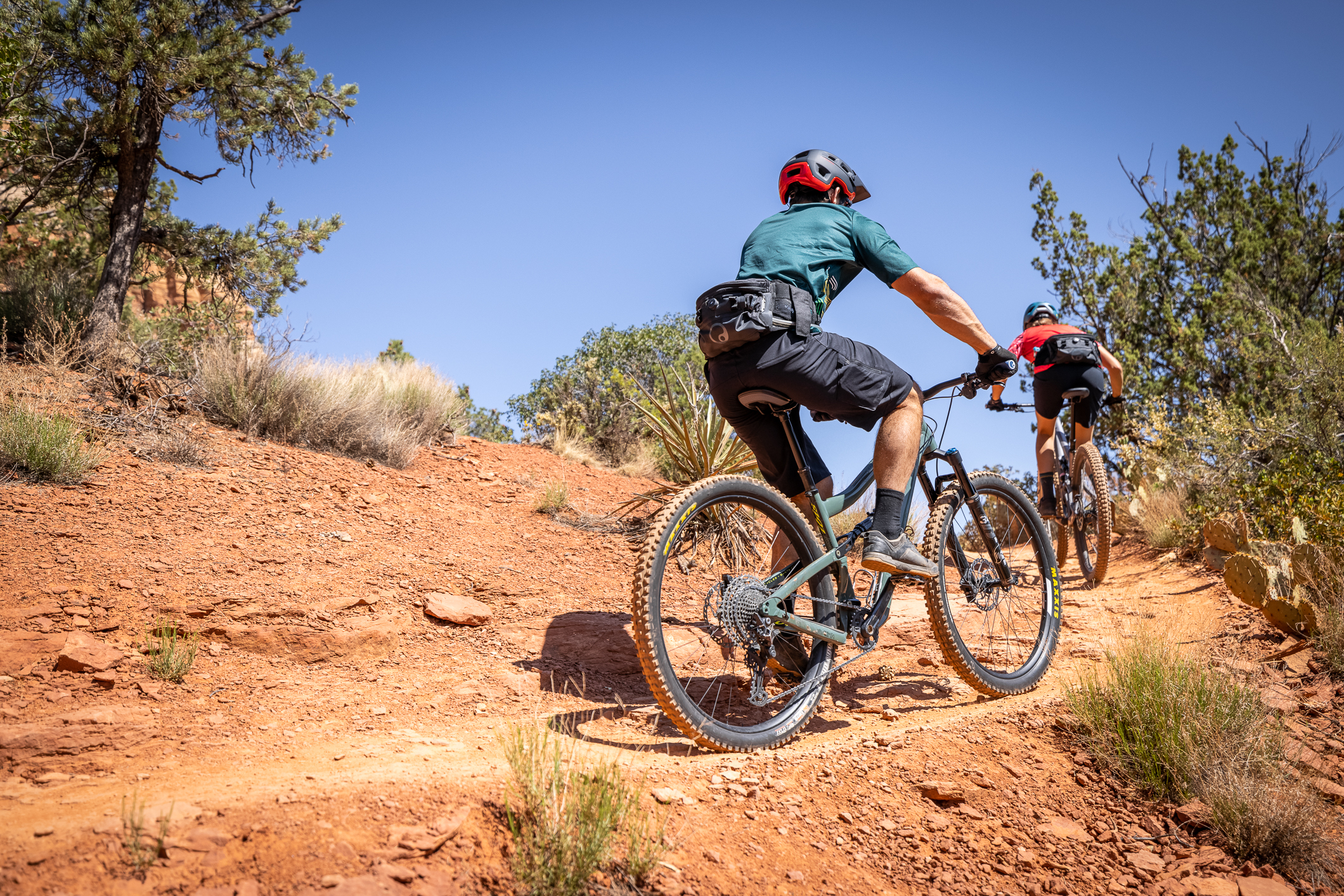
Mountain biking in America represents the pinnacle of trail diversity and technical innovation found anywhere on Earth. From Utah's otherworldly slickrock formations to the Pacific Northwest's cathedral-like forests, the best mountain bike trails in the US offer experiences that have redefined what's possible on two wheels. This isn't just recreation—it's access to landscapes and challenges that exist nowhere else, drawing riders from across the globe to push their limits on American soil.
The Best Mountain Bike Trails in the US
The country's geological diversity creates a natural laboratory for the evolution of mountain biking. Whether you're a data analyst escaping corporate monotony on weekends or a professional athlete training for international competition, America's trail networks deliver experiences that range from meditative flow states to adrenaline-soaked technical challenges. The best mountain biking in the US has become a benchmark against which other countries measure their trail development. What sets American mountain biking apart isn't just the terrain—it's the sophisticated infrastructure, passionate advocacy communities, and relentless innovation that have elevated the sport from its humble beginnings in California's Marin County to today's purpose-built trail systems that rival any engineered recreation facility.
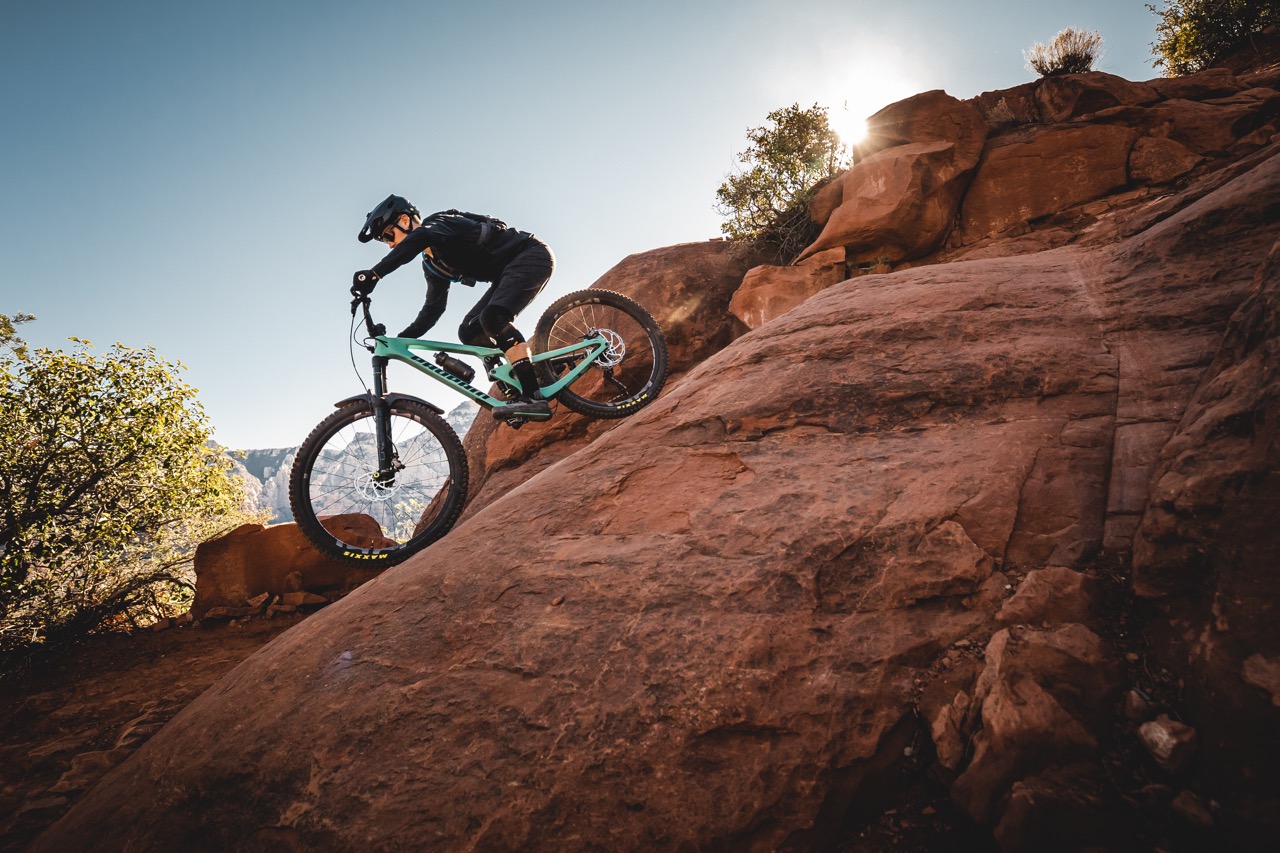
What Defines World-Class Mountain Bike Trails?
Elite trail systems share distinctive characteristics that separate them from ordinary singletrack. The top 10 mountain bike trails in the us achieved legendary status through careful cultivation by passionate communities, innovative trail design principles, and continuous refinement based on feedback from riders across all skill levels.
Geological diversity forms the foundation of American mountain biking's global reputation. The country's varied terrain spans granite domes in California's Sierra Nevada, sandstone formations across the Colorado Plateau, and ancient Appalachian ridges that have weathered millions of years of geological evolution. This variety enables riders to experience completely different challenges and sensations without international travel. Technical rock gardens, demanding precision and patience, seamlessly transition into flowing bermed sections that allow speed-carrying techniques reminiscent of surfing on dirt.
Trail network design and maintenance separate exceptional riding destinations from merely good ones. The locations consistently ranking among the best mountain bike trails in America feature interconnected systems that allow riders to explore for days without repeating routes. Professional trail crews and dedicated volunteer organizations maintain sustainable infrastructure that can handle heavy traffic while preserving sensitive environmental areas through scientifically based trail design principles.
Community engagement and advocacy provide the cultural foundation that transforms collections of trails into true destinations. These communities include trail builders developing innovative features, local shops providing mechanical expertise, advocacy groups securing long-term access agreements, and riding communities creating welcoming environments for visitors. The best states for mountain biking consistently feature strong International Mountain Bicycling Association chapters and local bike shops that function as community hubs, connecting riders with local knowledge and trail conditions.
Infrastructure sophistication might seem utilitarian, but it's crucial for multi-day destination experiences. Quality bike shops staffed with certified mechanics, comprehensive gear rental programs for traveling riders, professional shuttle services that access remote trailheads, and accommodations that understand the unique needs of mountain bikers all contribute to destinations that support extended adventures rather than just day trips.
Extended riding seasons create geographic advantages that work in riders' favor throughout the year. When Colorado's alpine systems are snow-covered, Arizona's desert networks offer prime conditions. This climate diversity means optimal riding conditions exist somewhere in America throughout the calendar year, enabling dedicated riders to chase perfect trail conditions across different regions.

America's Premier Mountain Biking Destinations
Colorado: High-Altitude Technical Laboratory
Colorado's thin air challenges cardiovascular systems, but the state's trail networks will redefine your understanding of mountain biking possibilities. Crested Butte stands as the acknowledged birthplace of modern mountain biking, where the sport's pioneers first pointed their modified cruisers downhill in the late 1970s. Today, the 401 Trail and Teocalli Ridge offer everything from accessible cruising to lung-demanding climbs, all situated within scenery that appears professionally photographed regardless of lighting conditions.
Fruita has earned recognition as a desert mountain biking destination where the 18 Road trail system delivers buff singletrack that flows with liquid precision. The contrast between slickrock technical sections and loose, sandy corner combinations keeps riders mentally engaged. At the same time, year-round accessibility makes it a crucial winter destination for riders escaping harsh northern climates. The local cycling culture runs remarkably deep—spontaneous invitations to join afternoon group rides from strangers happen regularly.
Durango provides access to some of Colorado's most technically demanding terrain. Trail systems around Purgatory Resort, during summer operations, offer shuttle-accessed descents that test advanced technical skills and risk management. Meanwhile, the extensive backcountry network surrounding Hermosa Creek delivers wilderness adventures that feel genuinely remote, despite their proximity to civilization.
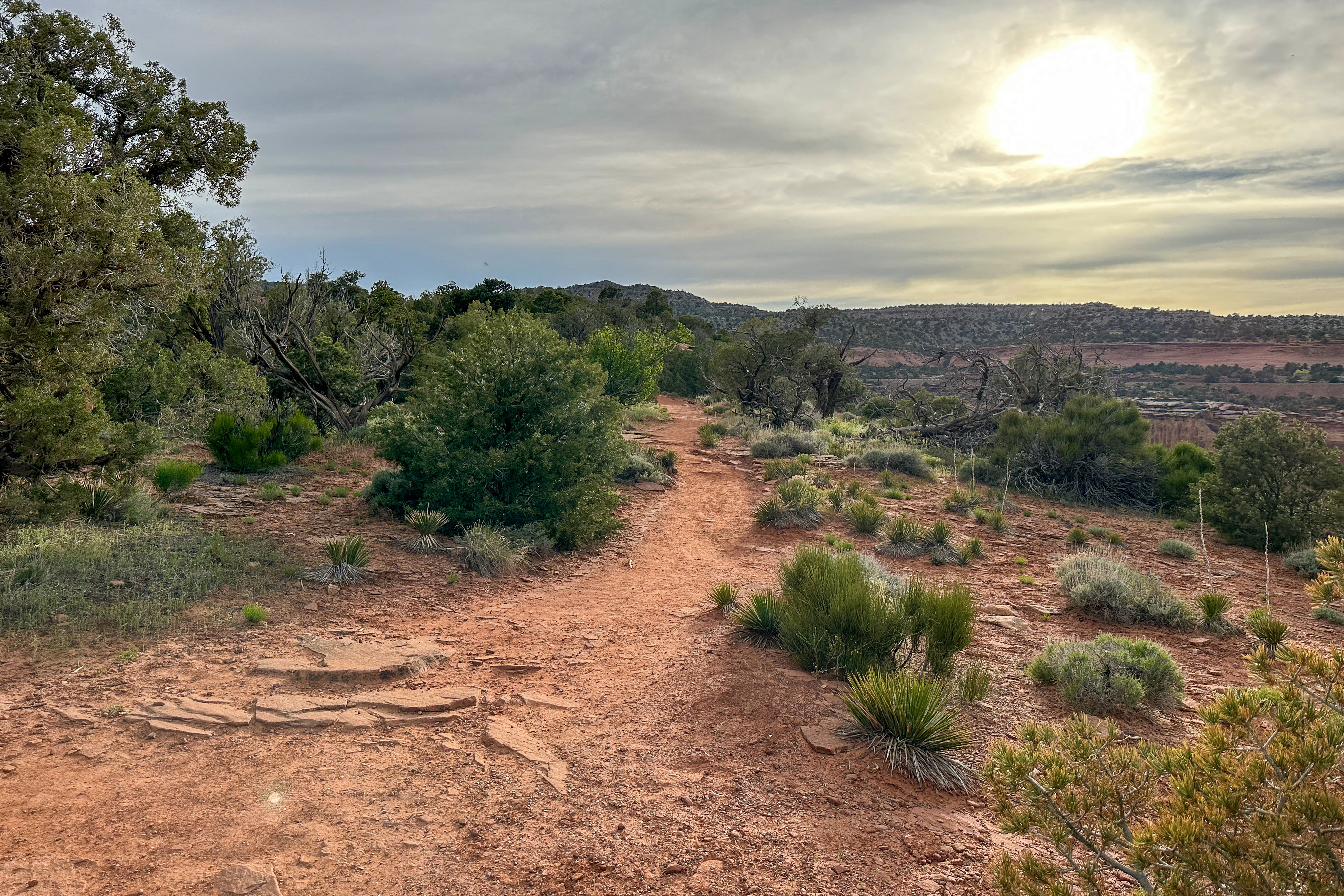
Trail at the Colorado National Monument near Grand Junction
Oregon: Loamy Perfection and Environmental Stewardship
Oregon's mountain biking culture embodies the Pacific Northwest’s outdoor values—maintaining a serious commitment to fun while demonstrating deep environmental respect. Bend has evolved into one of America's premier mountain bike destinations, where Phil's Trail and the Maston Trail System offer the loamy, flowing singletrack that haunts riders' dreams during off-season periods.
Oakridge legitimately calls itself the "Mountain Biking Capital of the Northwest" due to its exceptional trail quality and variety. The Alpine Trail and Larison Creek offer authentic backcountry adventures through old-growth forest ecosystems, where the trail surfaces feel like riding on premium carpeting. Local riding communities have invested considerable effort in building sustainable trails that showcase the region's natural beauty while providing world-class riding experiences.
Hood River offers unique opportunities combining mountain biking with Columbia River Gorge recreation. The contrast between high desert trail characteristics and lush forest singletrack provides variety, keeping every ride mentally engaging, while the area's craft brewing scene ensures appropriate post-ride recovery options.
Utah: Slickrock Innovation and Desert Mastery
Utah's landscape appears purposefully designed for mountain biking applications. Moab requires no introduction among serious riders—the Slickrock Bike Trail alone has generated countless social media posts and inspired international pilgrimages. However, the genuine magic emerges when exploring beyond prominent attractions to discover adventures like the Whole Enchilada, a comprehensive, top-to-bottom descent that transitions from alpine forest ecosystems to desert floor environments in one psychologically intense ride.
Park City evolved from historic mining operations into a mountain biking paradise featuring over 400 miles of accessible singletrack directly from downtown locations. The Mid Mountain Trail offers an excellent introduction to high-elevation riding, striking a balance between accessibility and spectacular alpine scenery. Meanwhile, lift-accessed terrain at Park City Mountain Resort delivers gravity-fed thrills for riders who prefer mechanically assisted elevation gain.
Hurricane and St. George in southern Utah offer winter riding experiences that rival any global destination. The JEM Trail and Guacamole combine technical challenges with breathtaking red rock beauty, where the primary difficulty often involves maintaining trail focus rather than becoming distracted by the surrounding geological formations.

Mountain biking on the rocks of Moab
Vermont: East Coast Flow and Sustainable Tourism
Vermont demonstrates that exceptional mountain biking doesn't require massive elevation changes or desert landscapes. Kingdom Trails has achieved legendary status by focusing on fundamental principles—beautifully crafted singletrack that flows naturally through the pastoral New England countryside. The trail network's design philosophy emphasizes enjoyment over pure difficulty, creating experiences that welcome riders across all ability levels while providing meaningful challenges for those seeking them.
Killington Resort's summer operations offer lift-accessed terrain rivaling western destinations, while surrounding trail networks provide cross-country adventures through quintessential Vermont landscapes. The combination of technical terrain and scenic beauty creates riding experiences that are distinctly eastern American.
Stowe completes Vermont's mountain biking triumvirate with trails showcasing the state's commitment to sustainable tourism and outdoor recreation. The Cady Hill Forest and surrounding networks offer riding that's simultaneously accessible to families and challenging enough to maintain the engagement of expert riders.
California: From Coastal Redwoods to Alpine Perfection
California's mountain biking diversity reflects the state's geographical complexity, truly offering specialized experiences for every riding preference. Santa Cruz pioneered the sport's technical evolution through steep, root-intensive trails that wind through towering redwood forests, demanding advanced bike handling skills and separating casual riders from dedicated practitioners. Soquel Demonstration Forest and the trail networks surrounding UC Santa Cruz provide challenges that have humbled experienced riders while inspiring countless others to expand their technical capabilities.
The Lake Tahoe region offers alpine adventures resembling riding through high-definition nature documentaries. The Flume Trail offers one of America's most visually spectacular rides, featuring singletrack carved directly into the cliffsides with panoramic views of the crystal-clear alpine lake below. Tahoe Rim Trail sections accessible to mountain bikes offer high-altitude adventures that generously reward the significant effort required to access them.
Downieville deserves special recognition as a destination that has achieved mythical status among gravity-oriented riders. The Downieville Downhill race course has challenged the world's elite riders for decades. At the same time, the surrounding trail networks offer adventures ranging from gentle cruising to full-commitment, technical descents that require advanced risk assessment skills.
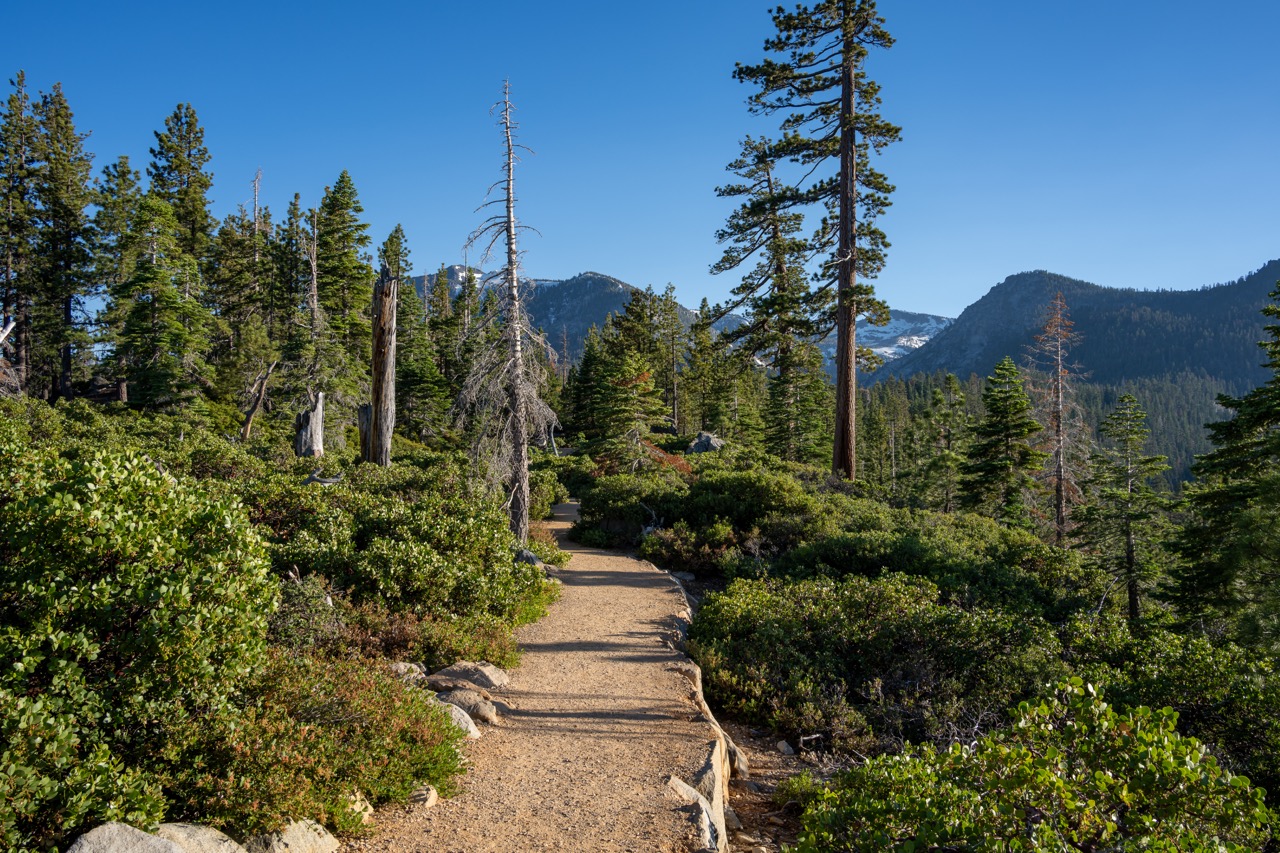
Trail in Emerald Bay South Lake Tahoe
Arizona: Desert Riding Laboratory
Arizona's mountain biking season operates opposite most American regions, making it crucial for riders seeking winter sunshine and optimal trail conditions. Sedona's red rock formations provide backdrops so spectacular they almost distract from the incredible riding quality. Bell Rock Pathway and Courthouse Butte Loop offer accessible introductions to desert riding, while the Hangover Trail provides technical challenges that demand respect and advanced skills.
Tucson offers desert singletrack with distinct characteristics, where saguaro cacti and cholla create landscapes that resemble alien planets. Arizona Trail sections around the city provide long-distance adventures through some of America's most unique ecosystems. In contrast, local trail networks offer a range of experiences, from beginner-friendly loops to expert-only, technical terrain.
Prescott adds high-desert variety to Arizona's mountain biking menu, where Thumb Butte and the Prescott Circle Trail offer cooler temperatures and different scenery compared to the state's southern desert regions. The riding season extends well into summer, providing refuge when lower elevations become uncomfortably hot.
North Carolina: East Coast Technical Mastery
Dismissing East Coast riding as inferior to western terrain represents a fundamental misunderstanding of American mountain biking. Pisgah National Forest presents technical challenges that regularly humble riders who have successfully conquered Colorado's high-altitude terrain. The combination of root systems, rock formations, and relentless elevation changes creates unique riding experiences where line selection and momentum management become critical survival skills.
Dupont State Forest offers a more approachable introduction to southeastern riding characteristics, with Ridgeline and Reasonover Creek providing flowing singletrack that builds rider confidence while showcasing the region's distinctive natural beauty. The area's numerous waterfalls offer scenic bonuses that are difficult to replicate in other American mountain biking destinations.
Asheville has emerged as a legitimate mountain biking hub where craft brewing culture intersects perfectly with trail riding communities. The city's bike shops and riding organizations welcome visitors with authentic Southern hospitality, while surrounding trail networks offer everything from family-friendly cruising to expert-only, technical terrain requiring advanced skills.
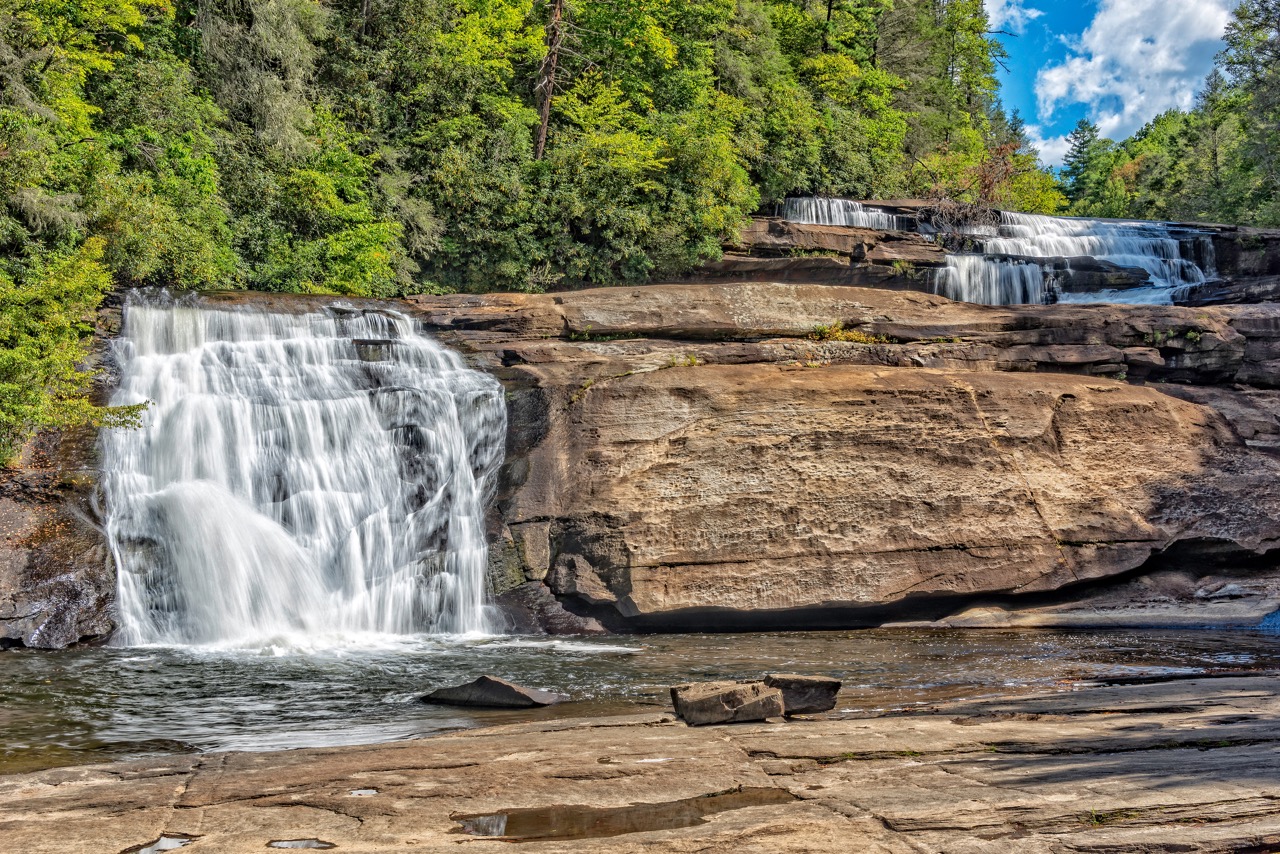
Triple waterfalls in DuPont State Park
Current Industry Trends and Insider Intelligence
The American mountain biking landscape continues evolving rapidly, with new trail systems opening regularly and established destinations significantly expanding their offerings. Bike parks have experienced explosive growth, with resorts such as Whistler Bike Park and Highland Mountain Bike Park investing heavily in lift-accessed terrain that caters to gravity-oriented riders. This trend has democratized access to big mountain riding, allowing riders to focus on developing their descending skills without requiring extreme cardiovascular fitness for massive climbing efforts.
Trail advocacy sophistication has increased dramatically, with organizations like the International Mountain Bicycling Association (IMBA) collaborating with local groups to secure long-term access while promoting scientifically based, sustainable trail-building practices. The result is a new generation of purpose-built trails offering superior riding experiences while minimizing environmental impact through evidence-based design principles.
E-bike integration has opened up new possibilities for riders of all physical abilities, allowing access to terrain that might have been previously beyond reach due to fitness limitations or physical constraints. Many trail systems now accommodate e-bikes, though regulations vary significantly between different jurisdictions and land management agencies.
Professional shuttle services have fundamentally transformed how riders experience specific destinations. Companies offering uplift services have made big mountain descents accessible to riders who might lack the fitness or time for the massive climbing efforts required. This has enabled the development of specialized descent trails that prioritize flow characteristics and technical features over climbing-optimized routing.
Events and festivals continue to expand in scope and popularity, with gatherings like Outerbike and Sea Otter Classic functioning as community celebrations that combine riding, gear demonstrations, and social experiences. These events often provide exclusive access to trails and terrain that would be difficult to experience independently otherwise.
Emerging destinations continue appearing as dedicated riders explore less prominent locations. Places like Copper Harbor, Michigan, Bentonville, Arkansas, and Marquette, Michigan, have developed world-class trail systems that rival traditional mountain biking destinations, offering unique cultural experiences and distinct riding characteristics.
For riders seeking genuinely exceptional experiences, consider timing visits to coincide with optimal trail conditions rather than peak tourist seasons. Shoulder seasons often offer the perfect combination of ideal weather, uncrowded trails, and an enthusiastic local riding community eager to share their favorite locations with knowledgeable visitors.

Maximizing Performance: Equipment and Ergonomics for Epic Rides
Before exploring America's premier destinations, it is essential to understand the critical relationship between proper bike setup and trail performance. Leading sports medicine researchers and professional cycling biomechanics experts consistently emphasize that saddle positioning and grip ergonomics have a direct impact on both performance and injury prevention during extended trail sessions.
Saddle height and positioning affect far more than comfort—it's the foundation of efficient power transfer and technical control. Peer-reviewed studies from cycling performance laboratories have demonstrated that an optimal saddle setup can reduce muscle fatigue by up to 15% while improving descending confidence through superior weight distribution. When tackling Moab's 3,000-foot descents or grinding through Pisgah's relentless technical climbs, this efficiency translates directly into enhanced enjoyment and critical safety margins.
Handlebar grips demand equal attention, particularly given the aggressive terrain characteristics found throughout American trail systems. Ergonomic grips that properly distribute hand pressure and reduce contact point stress become crucial during extended descents, where continuous trail feedback can cause debilitating hand fatigue and compromised bike control. Professional downhill racing teams invest significant resources in optimizing grip selection—recreational riders benefit tremendously from similar attention to these primary contact points.
The biomechanical synergy between proper bike fit and America's diverse terrain cannot be overstated. Whether navigating Vermont's root-choked technical sections or carving high-speed berms through Utah's desert singletrack, your bicycle should function as a natural extension of your body rather than equipment you're constantly fighting against.
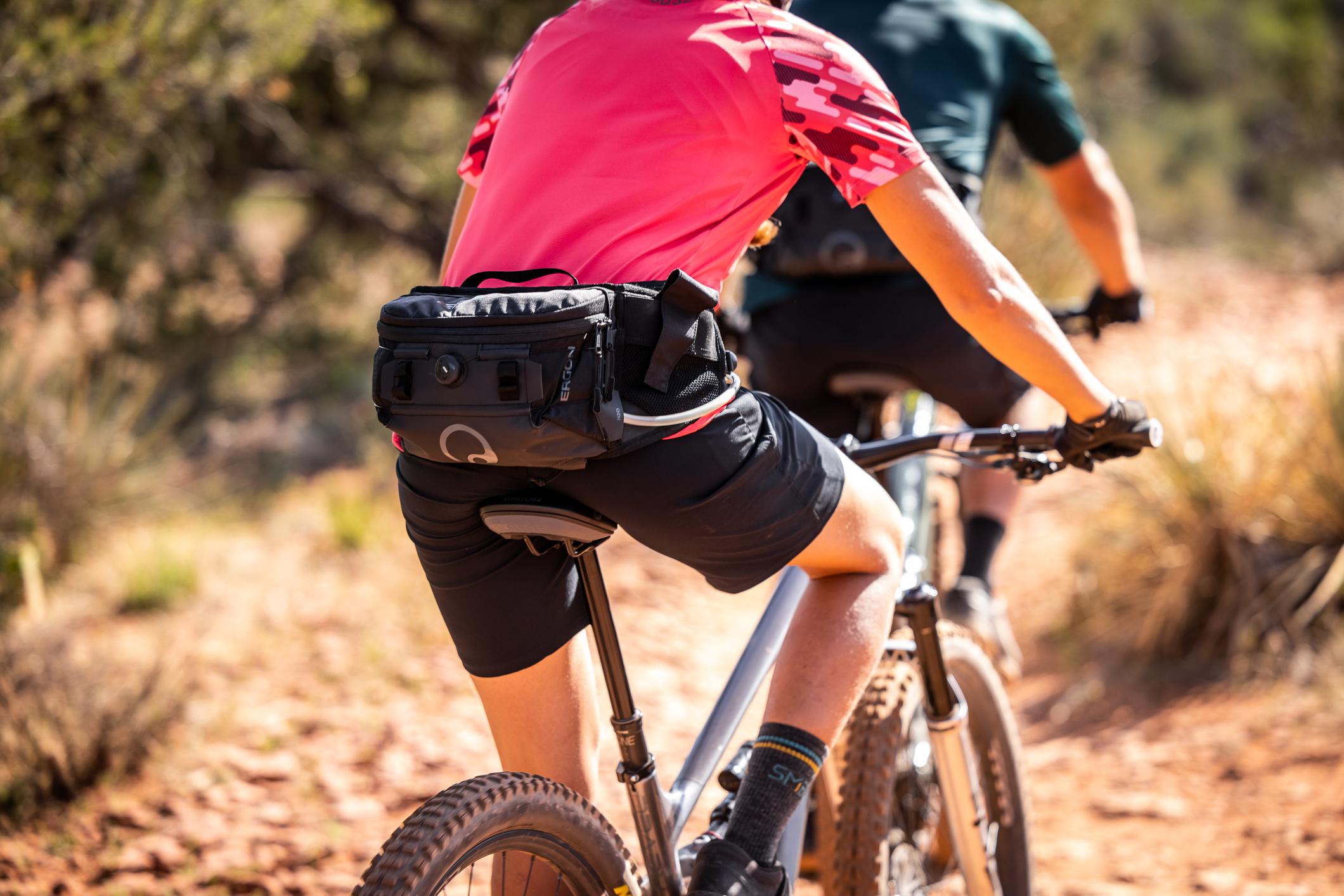
The Future of American Mountain Biking
The best mountain bike trails in the United States offer far more than exceptional riding—they provide access to America's diverse landscapes, cultures, and communities through the unique lens of mountain biking. Each destination tells a distinctive story through its trails, the people who build and maintain them, and the experiences they create for riders willing to explore beyond familiar territory.
What makes American mountain biking truly exceptional isn't just the quality of individual trails, though many rank among the world's absolute best. It's the incredible diversity of experiences available within a single country's borders, the passionate communities that welcome visitors as extended family, and the ongoing evolution of a sport that continues pushing boundaries while respecting the natural environments that make it possible.
Whether you're planning your first cross-country mountain bike trip or you're a seasoned veteran adding new destinations to your lifetime hit list, remember that the most memorable rides often happen when you remain open to unexpected discoveries. Engage with local riders, explore beyond prominent attractions, and don't hesitate to push your comfort zone—the top mountain bike trails in the US consistently reward those willing to earn their adventures.
The trails await, the communities welcome newcomers, and the adventures remain limitless. All that remains is to point your wheels toward the next great American mountain biking experience and begin pedaling. After all, the best trail is always the next one you haven't ridden yet.